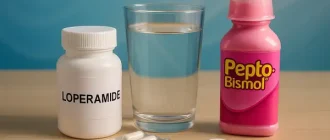Have you ever noticed a rather surprising change in the color of your stool and urine after savoring some beet salad? It is a common phenomenon, aptly named beeturia, which happens to many people after consuming beets. Although not typically a cause for alarm, it can be briefly alarming. Here’s everything you need to know about what is normal and when to take note.
What Is Normal
Beeturia isn’t something you should typically be overly concerned about. Eating beets or drinking beet juice can make your urine or stool turn pinkish or slightly reddish, a condition that can span a day or two. It’s simply a matter of your body processing the beet’s natural pigments. Although it might be visually shocking, it’s not harmful. If you see this, take it as a sign your body enjoyed the beets as much as you did.
What is Not
If the red color persists in your pee or poop for several days after your last beet meal, that’s when you may need to get attentive. Extended color changes may indicate serious medical conditions such as blood in urine or stool, anemia, low stomach acid, ulcers, or inflammatory bowel disease (IBD). If this is the case, consult your doctor right away.
Red Colored Stool – Is it Dangerous?
Usually, having red-colored stool after beet consumption is not dangerous at all. According to EatingWell, high levels of oxalic acid in your system can preserve the red color in beets, leading to red stool. This few-days stint known as beeturia is common and not harmful. But as explained earlier, if the color persists for more than a few days, it’s wiser to get checked out.
Conclusion with Tips
Beets are filled with health benefits and should not cause undue worry just because of a temporary color change they might bring along. However, if you notice persistent red color in your urine or stool, it should not be ignored.
Here are some actionable tips:
- Recognize Beeturia: Learn and recognize the signs of beeturia. If reddish or pinkish pee or stool follows a beet dish, it’s often this harmless condition.
- Monitor the Change: Keep a check on the longevity of the color change. If the color does not return to normal after a few days, consult your doctor.
- Seek Medical Help: While self-diagnosis might be tempting, medical help should be sought whenever necessary. Persistent color change, pain, or discomfort should not be overlooked.
In conclusion, continue enjoying your beet smoothies and salads while staying observant of any lasting changes in your bodily functions. Balance is key! So, the next time you find yourself amazed by the unusual reddish hue in the restroom after your last beet feast, remember – beeturia – it’s usually just temporary and harmless.
About the Author
Reyus Mammadli is the author of this health blog since 2008. With a background in medical and biotechnical devices, he has over 15 years of experience working with medical literature and expert guidelines from WHO, CDC, Mayo Clinic, and others. His goal is to present clear, accurate health information for everyday readers — not as a substitute for medical advice.







